-
 Bitcoin
Bitcoin $108,882.1253
-0.18% -
 Ethereum
Ethereum $2,552.5669
-0.81% -
 Tether USDt
Tether USDt $1.0005
0.02% -
 XRP
XRP $2.2403
-2.26% -
 BNB
BNB $660.0215
-0.23% -
 Solana
Solana $150.5827
-1.94% -
 USDC
USDC $1.0000
0.00% -
 TRON
TRON $0.2862
0.88% -
 Dogecoin
Dogecoin $0.1671
-3.38% -
 Cardano
Cardano $0.5826
-3.24% -
 Hyperliquid
Hyperliquid $38.7689
-4.13% -
 Sui
Sui $2.9267
-2.73% -
 Bitcoin Cash
Bitcoin Cash $482.1140
-4.17% -
 Chainlink
Chainlink $13.3784
-3.15% -
 UNUS SED LEO
UNUS SED LEO $9.0410
0.30% -
 Avalanche
Avalanche $18.1461
-3.09% -
 Stellar
Stellar $0.2404
-2.24% -
 Toncoin
Toncoin $2.8244
-2.01% -
 Shiba Inu
Shiba Inu $0.0...01161
-2.32% -
 Litecoin
Litecoin $88.1091
-3.05% -
 Hedera
Hedera $0.1558
-2.72% -
 Monero
Monero $318.0662
-2.09% -
 Polkadot
Polkadot $3.4399
-3.95% -
 Dai
Dai $1.0000
-0.01% -
 Ethena USDe
Ethena USDe $1.0002
0.00% -
 Bitget Token
Bitget Token $4.4678
-2.42% -
 Uniswap
Uniswap $7.3474
-4.23% -
 Pepe
Pepe $0.0...09803
-5.95% -
 Aave
Aave $269.1728
-3.44% -
 Pi
Pi $0.4848
-2.71%
What do you think about the 5-day average volume line crossing the 60-day average volume line but the price is stagnant?
A 5-day volume crossover above the 60-day average with stagnant price may signal accumulation, distribution, or anticipation of a catalyst.
Jul 03, 2025 at 10:49 pm
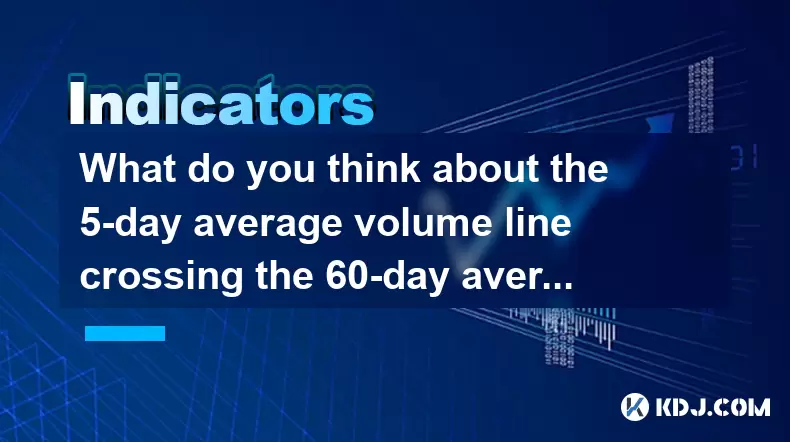
Understanding the 5-Day and 60-Day Average Volume Lines
In technical analysis, volume is often considered a leading indicator of price movement. The 5-day average volume line represents the average trading volume over the past five days, while the 60-day average volume line reflects the average volume over the last two months. When the 5-day average volume crosses above the 60-day average volume, it signals an increase in recent buying or selling pressure.
This crossover can indicate that traders are becoming more active, even if the price remains unchanged. It's important to understand that volume often precedes price, meaning changes in volume can predict future price movements before they occur. However, when this occurs without a corresponding shift in price, it may suggest a tug-of-war between buyers and sellers.
Interpreting Volume Crossover with Stagnant Price
A situation where the 5-day average volume line crosses above the 60-day average volume line but the price remains stagnant can be interpreted in several ways. One possibility is that there is increased interest in the asset, but neither bulls nor bears have gained control. This could result in a consolidation phase, where traders are accumulating or distributing positions without triggering a breakout.
Another interpretation involves the presence of smart money activity. Large institutional players might be entering or exiting positions gradually to avoid spiking the price too early. In such cases, volume increases without price movement, as these entities absorb orders at specific price levels.
It’s also possible that the market is waiting for a catalyst—such as news, regulatory developments, or macroeconomic events—to push the price in one direction. Until then, the increased volume indicates anticipation or uncertainty among traders.
How to Analyze This Scenario on a Chart
To analyze this scenario effectively, you should:
- Open your preferred charting platform (e.g., TradingView or Binance’s native tools).
- Add both the 5-day average volume and 60-day average volume indicators.
- Observe whether the shorter-term volume line crosses above the longer-term line.
- Simultaneously monitor the price action to see if it confirms the volume signal.
If the price does not move significantly, zoom into smaller timeframes (like 1-hour or 4-hour charts) to detect hidden patterns. Look for candlestick formations, support/resistance zones, or other volume anomalies that may offer clues about potential breakouts.
Additionally, consider using on-chain analytics tools like Glassnode or CryptoQuant to cross-reference volume data with metrics such as exchange inflows/outflows or whale activity.
Possible Implications in Different Market Phases
The implications of a volume crossover during price stagnation can vary depending on the broader market context:
During a downtrend: A rising short-term volume average might indicate accumulation by strong hands. If the price fails to drop despite increasing volume, it could mean sellers are exhausting their positions.
During an uptrend: If the price stalls after a rally while volume picks up, it might signal profit-taking or distribution by large holders. This can lead to either a continuation or reversal, depending on subsequent candle behavior.
In a sideways market: Increased volume without price movement may point to a buildup phase. Traders are likely testing key support and resistance levels, preparing for a potential breakout.
Each of these scenarios requires close monitoring of order book depth and trade imbalances. Tools like order book heatmaps or depth charts can help visualize whether buy walls or sell walls are forming around current prices.
What Should Traders Do?
Traders facing this situation should adopt a cautious yet observant approach. Here are actionable steps:
- Avoid making impulsive trades based solely on volume crossovers.
- Wait for confirmation from other indicators such as moving averages, RSI divergence, or MACD crossovers.
- Monitor liquidity pockets on the order book to identify where large orders are placed.
- Set up alerts for significant volume spikes or sudden drops in open interest.
- Use trailing stop-losses if entering early based on volume signs, especially in volatile crypto markets.
Also, consider the timeframe you're analyzing. Short-term traders might interpret this differently than long-term investors. For example, a swing trader might look for a breakout within hours, whereas a position trader may wait for multiple confirmations across days.
Frequently Asked Questions
Q: Can volume increase without price movement in crypto?
Yes, volume can rise without immediate price movement. This often happens during accumulation or distribution phases, where large players execute trades without triggering volatility.
Q: Does a 5-day volume crossover always signal a trend change?
No, not necessarily. While it can be a precursor to a trend change, it must be confirmed by other technical or fundamental signals before being acted upon.
Q: How do I differentiate between bullish and bearish volume buildup?
Look at the close-to-open price relationship and candle wicks. If most candles close near their highs despite high volume, it leans bullish. Conversely, if closes are near lows, it may indicate bearish dominance.
Q: Should I rely solely on volume indicators for trading decisions?
It’s generally unwise to base decisions solely on volume. Combine it with price action, order flow, and sentiment indicators to build a robust trading strategy.
Disclaimer:info@kdj.com
The information provided is not trading advice. kdj.com does not assume any responsibility for any investments made based on the information provided in this article. Cryptocurrencies are highly volatile and it is highly recommended that you invest with caution after thorough research!
If you believe that the content used on this website infringes your copyright, please contact us immediately (info@kdj.com) and we will delete it promptly.
- Bitcoin's Pattern Break: Are HODLers the Key to the Next Surge?
- 2025-07-04 18:50:12
- Bitcoin Price, Trump's Bill, and the $150K Dream: A NYC Take
- 2025-07-04 19:50:12
- Ethereum, LILPEPE, and the July Bounce: Will Pepe Steal ETH's Thunder?
- 2025-07-04 19:10:12
- Binance Institutional Loans: Unlocking 4x Leverage and Zero Interest for Whales
- 2025-07-04 19:15:12
- Bitcoin Bull Run: Analysts Eye Peak in Late 2025?
- 2025-07-04 19:20:13
- Pepe Indicators, Bullish Forecast: Can the Meme Coin Rally?
- 2025-07-04 19:25:12
Related knowledge
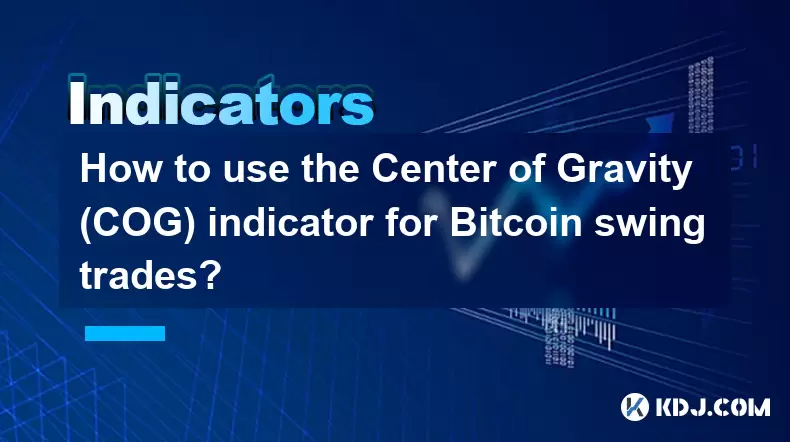
How to use the Center of Gravity (COG) indicator for Bitcoin swing trades?
Jul 04,2025 at 06:21pm
Understanding the Center of Gravity (COG) IndicatorThe Center of Gravity (COG) indicator is a technical analysis tool primarily used to identify potential trend reversals and momentum shifts in financial markets, including cryptocurrency trading. Unlike traditional oscillators like RSI or MACD, the COG focuses on calculating the weighted average price o...
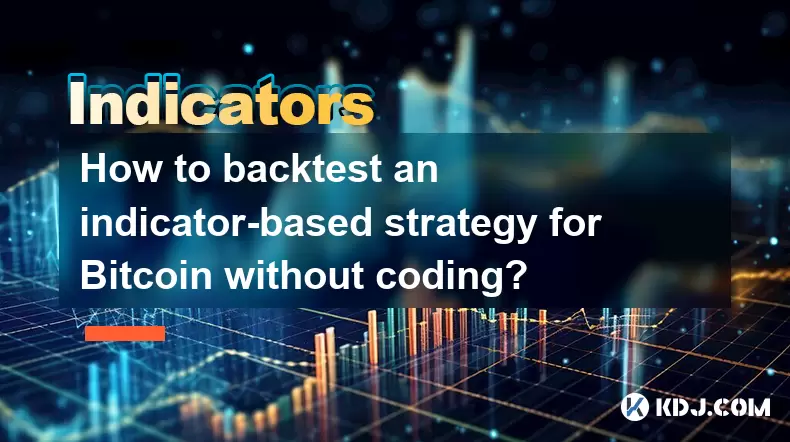
How to backtest an indicator-based strategy for Bitcoin without coding?
Jul 04,2025 at 06:50pm
Understanding Backtesting in Cryptocurrency TradingBacktesting is the process of evaluating a trading strategy by applying it to historical data to see how it would have performed. In the context of Bitcoin, backtesting allows traders to test their indicator-based strategies using past price movements and volume data. This helps identify whether a strat...

What is indicator confluence and why is it important for Bitcoin trading?
Jul 04,2025 at 03:14pm
Understanding the Concept of Indicator ConfluenceIndicator confluence refers to the alignment or agreement between multiple technical indicators when analyzing a financial asset, such as Bitcoin. Instead of relying on a single indicator to make trading decisions, traders use confluence to increase the probability of successful trades by ensuring that di...
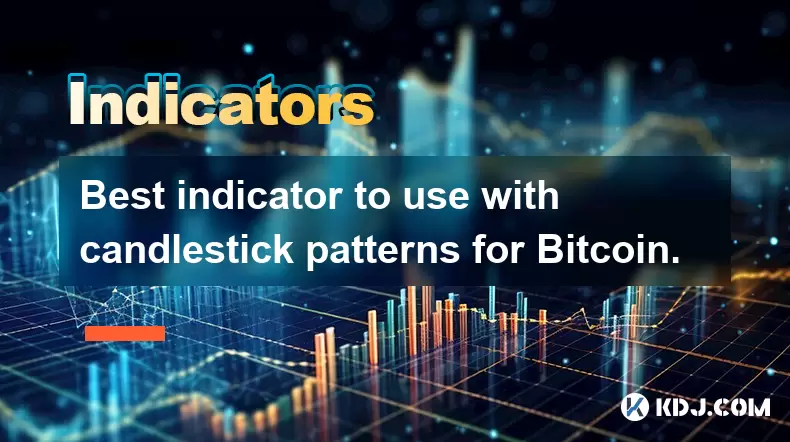
Best indicator to use with candlestick patterns for Bitcoin.
Jul 04,2025 at 12:36pm
Understanding the Role of Indicators with Candlestick PatternsIn the world of cryptocurrency trading, especially when dealing with Bitcoin, technical analysis plays a crucial role in identifying potential price movements. Traders often rely on candlestick patterns to forecast market behavior. However, these patterns alone may not always provide sufficie...
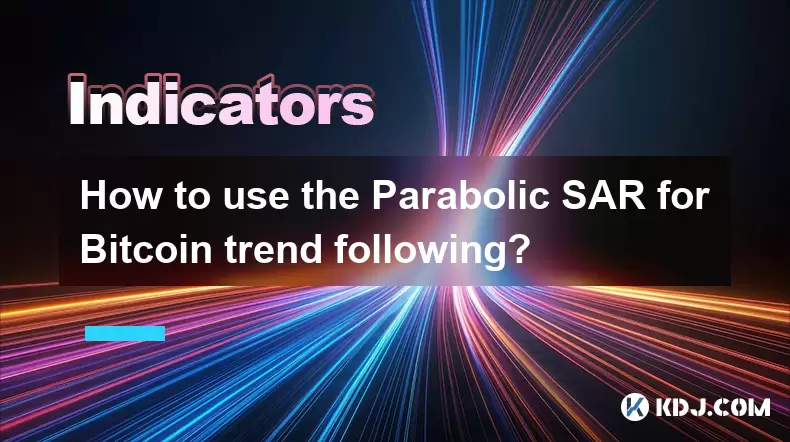
How to use the Parabolic SAR for Bitcoin trend following?
Jul 04,2025 at 05:21pm
Understanding the Parabolic SAR IndicatorThe Parabolic SAR (Stop and Reverse) is a technical analysis tool developed by J. Welles Wilder, primarily used to identify potential reversals in asset prices. In the context of Bitcoin trading, it serves as a crucial instrument for spotting entry and exit points during trending markets. The indicator appears on...
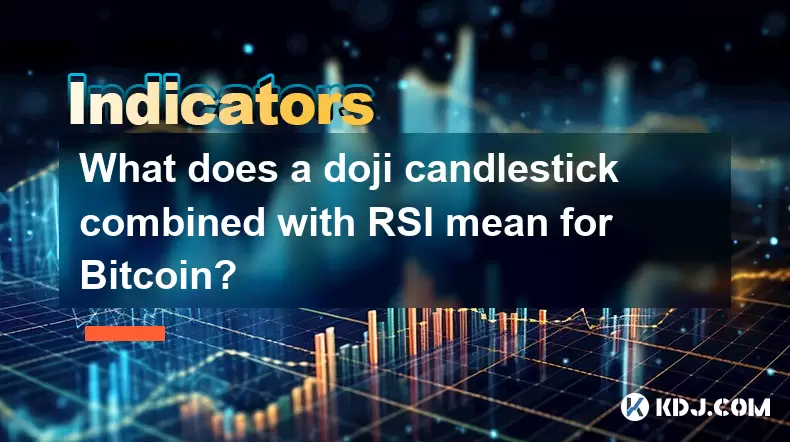
What does a doji candlestick combined with RSI mean for Bitcoin?
Jul 04,2025 at 03:08pm
Understanding the Doji Candlestick PatternA doji candlestick is a critical technical analysis pattern that signals market indecision. It forms when the opening and closing prices of an asset are nearly identical, resulting in a very small or nonexistent body with long upper and lower wicks. In the context of Bitcoin, this pattern often suggests a potent...

How to use the Center of Gravity (COG) indicator for Bitcoin swing trades?
Jul 04,2025 at 06:21pm
Understanding the Center of Gravity (COG) IndicatorThe Center of Gravity (COG) indicator is a technical analysis tool primarily used to identify potential trend reversals and momentum shifts in financial markets, including cryptocurrency trading. Unlike traditional oscillators like RSI or MACD, the COG focuses on calculating the weighted average price o...

How to backtest an indicator-based strategy for Bitcoin without coding?
Jul 04,2025 at 06:50pm
Understanding Backtesting in Cryptocurrency TradingBacktesting is the process of evaluating a trading strategy by applying it to historical data to see how it would have performed. In the context of Bitcoin, backtesting allows traders to test their indicator-based strategies using past price movements and volume data. This helps identify whether a strat...

What is indicator confluence and why is it important for Bitcoin trading?
Jul 04,2025 at 03:14pm
Understanding the Concept of Indicator ConfluenceIndicator confluence refers to the alignment or agreement between multiple technical indicators when analyzing a financial asset, such as Bitcoin. Instead of relying on a single indicator to make trading decisions, traders use confluence to increase the probability of successful trades by ensuring that di...

Best indicator to use with candlestick patterns for Bitcoin.
Jul 04,2025 at 12:36pm
Understanding the Role of Indicators with Candlestick PatternsIn the world of cryptocurrency trading, especially when dealing with Bitcoin, technical analysis plays a crucial role in identifying potential price movements. Traders often rely on candlestick patterns to forecast market behavior. However, these patterns alone may not always provide sufficie...

How to use the Parabolic SAR for Bitcoin trend following?
Jul 04,2025 at 05:21pm
Understanding the Parabolic SAR IndicatorThe Parabolic SAR (Stop and Reverse) is a technical analysis tool developed by J. Welles Wilder, primarily used to identify potential reversals in asset prices. In the context of Bitcoin trading, it serves as a crucial instrument for spotting entry and exit points during trending markets. The indicator appears on...

What does a doji candlestick combined with RSI mean for Bitcoin?
Jul 04,2025 at 03:08pm
Understanding the Doji Candlestick PatternA doji candlestick is a critical technical analysis pattern that signals market indecision. It forms when the opening and closing prices of an asset are nearly identical, resulting in a very small or nonexistent body with long upper and lower wicks. In the context of Bitcoin, this pattern often suggests a potent...
See all articles

























































































